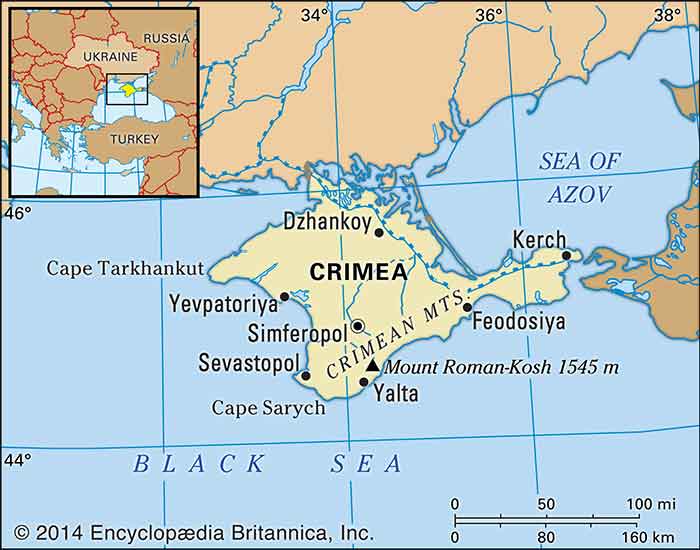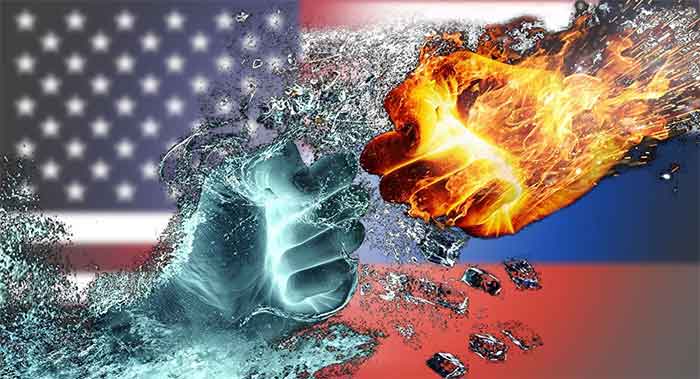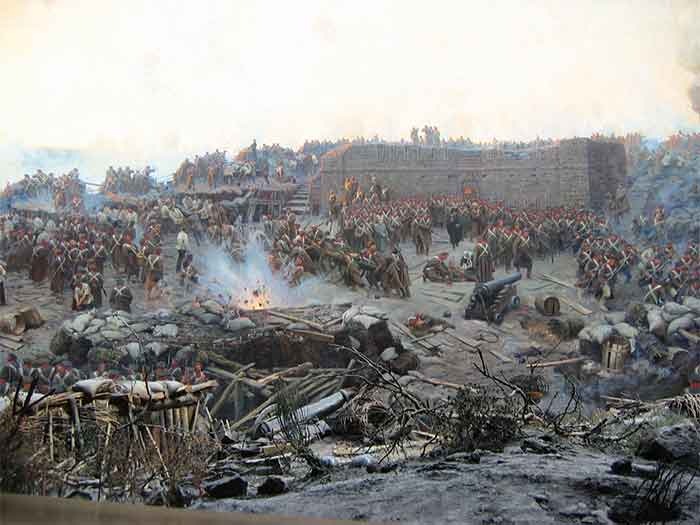
“The average [Soviet] citizen’s innate readiness to defend Mother Russia against any invader was stronger than his assumed aversion to the Communist dictatorship. As to the Soviet armed forces, their unwavering determination, their unwillingness to admit defeat, and their capability to improvise astounded the Germans. Time and again these qualities compensated for the ineptitude of the Russian intermediate command… The Russian soldier was naturally gifted in using favorable terrain features, skillfully digging-in and constructing fortifications, and camouflaging himself. His willingness to hold out to the bitter end seemed to be a natural trait.
The German Navy’s principal concern in the Black Sea area was the transportation of supplies for the Army…Russian naval forces in the Black Sea would have to be attacked and destroyed. The degree of success obtained would determine the outcome of the war in the Black Sea area. Attention was called to the fact that eventually it would become necessary to occupy all Russian Black Sea bases and ports… At the beginning of August, the German Naval Operations Staff
submitted an estimate of the probable reaction of the Soviet Black Sea fleet in the event of a German penetration into the Caucasus. The Navy was to lend its support during the crossing of the Kerch Strait and prevent the Russian Black Sea fleet from interfering, Moreover, the Navy was to organize light forces for disrupting Russian communications across the Caspian Sea
the Army group forces would have to face a hard and time-consuming struggle along the entire Caucasus front even though sizeable Russian forces had been destroyed during the past weeks. The steadily growing lines of communications, the vast territory to be kept under control, the scarcity of motor fuel, and the increasing terrain obstacles were the principal factors that would slow down the advance.”
US Department of the Army, Pamphlet No. 20-26, March 1955
“What led Hitler and his followers to construct Majdanek, Sobidor, Auschwitz and Treblinka is the imperialist idea of exceptionalism—of racial, national and every other kind of exceptionalism.
Vasily Grossman, The Road, excerpted from an essay in the book titled The Hell of Treblinka
+++++++++
Scenario: Invasion of Russia’s Crimea
The United States has a very predictable prelude to any war that it seeks to conduct. The first to fight is the US Treasury, Wall Street, and the economic and financial instruments of US national power. Russia is currently under US sanctions for annexing Crimea and, perhaps, for just existing. A long roster of countries–China, Venezuela, and Iran, for example–and individuals are on the US Treasury sanctions roster, so many that the US might just as well sanction the entire world except for NATO members (maybe that is coming).
Following the sanctions onto the beach–head, the mighty US disinformation and propaganda machine hammers away at the opponent’s national government and character nitpicking at any perceived human rights violation, internal to the country; for example, Russia’s Alexei Navalny. The US disinformation machine consists of dozens of media/think tank organizations among them the New York Times, Atlantic Council, American Enterprise Institute, the Voice of America, the Washington Post and hundreds more anti-Russian (and Chinese) interests owned by behemoths like Fox, Comcast, Disney, and so on. Retired generals & admirals, former members of the US Congress, and think tank experts are available to drone on and on over the airwaves about the threat Russia poses and, they rationalize, war must be waged against them to ensure total American global dominance. The disinformation blitzkrieg would be a 24/7 propaganda operation similar to the run up to the second Iraq war. The Russians will be depicted as a sinister Slavic people, vermin even, not so much different than how the Nazi’s depicted the Russians in WWII.
The US & NATO case against Russia would include its disinformation practices through its international media outlets aimed at NATO allies; cyberattacks on the US; aggression (Crimea, Donbas, Syria); new weapons development (hypersonic), and the fact that Russia is largely surrounded by NATO allies and Russian officials complain about it—something they are supposed to accept, not decry.
Flimsy Justification
Anyway, the US would likely push its case for an invasion of Crimea as a first step to destabilize Russia. The US can and would argue before the United Nations that “international law” (US law) rejects Russia’s invasion of Crimea and its annexation. It is a very flimsy case to make since the US really does not recognize any nation’s sovereignty (Iraq, Libya, Colombia, Somalia, and Pakistan for example). Nonetheless, any type of flimsy legal legitimacy matters a lot to the US government before it pulls the trigger.
A ground attack on Crimea would be spearheaded by troops from Ukraine. They would probably push down from somewhere near Kershon from the North of Crimea and then split up into two forces, one headed for Simferopol (airport) and the other to head down the coast to Sevastopol (Russian naval base). US special forces would be embedded with the Ukraine troops advising them on tactics (they are already in Ukraine undertaking this mission). Any buildup of anti-Russian ground forces would have to be undertaken clandestinely and it is not clear how this would be done without Russia’s knowledge.
Anyway, months before Ukraine’s troop advance into Russia’s Crimea, US Navy SEALS and US Army Delta forces would infiltrate Crimean shores from, say, the Ukraine Western Naval Base in Odessa. They would engage in sabotage and establish satellite communications links with Ukrainian forces, EUCOM (European Command), the White House and Pentagon.
US Air Force combat air controllers would HALO jump (high altitude parachute drop) into Crimea to coordinate US & NATO airstrikes from airfields in Romania (Campa Turzii), Poland (Lask), and Hungary (Papa Air Base). Papa Air Base has runways to accommodate US C-17 heavy lift aircraft and was a key hub for the Joint Forcible Entry Bulgaria military exercise in the spring of 2021, which involved mechanized forces and paratrooper drops. It is likely paratroopers would be needed to get other US & NATO ground troops into Crimea to support Ukraine’s advance into Crimea.
F-16’s, F-15’s and F-35’s would also descend on Crimea from bases in England, Turkey and Germany. B-2s, B-52s and B1s would join in the carnage as well flying from bases in the US and, perhaps, Diego Garcia. Combat air controllers on the ground in Crimea would have their work cutout for them with so many aircraft from different nations trying to get in on some Crimea action. And let us not forget the obligatory cruise missile strikes that would be launched from US submarines. Such strikes would probably be aimed at Russian cruise-missile firing ships in the Caspian Sea, as well.
Grim Reapers
A real problem for Russia’s air forces is the US Air Force’s 493rd Air Squadron, The Grim Reapers, stationed at Lakenheath, England. They would be called in to clear the skies of Russian fighter aircraft over Crimea. This is a real mismatch for the Russian Air Force as the 493rd Squadron has the best air-to-air fighting pilots in the world.
The same type of a US & NATO attack planning would likely be used against Vladivostok, a key commercial port on the Pacific in the Russian Far East, bordering China. US carrier warplanes from the US presence in the Pacific would take part. China would likely assist the Russian defense of the port.
How about Russia’s Sakhalin’s near Japan? That might be easy pickings for the US Navy and Marines. Or perhaps go for a two-fer and attack Crimea and Kaliningrad. The latter is sandwiched right between Lithuania and Poland. It might not be hard for the US & NATO to stir up Lithuanian and Polish enmity for Russia’s treatment of the two nations during the Cold War (but will the 18 to 25 age group care?). Maybe cripple Russia’s naval base at Tartus in Syria or the Russia’s Khmeimim Air Base.
Russian Response
Russia would be unlikely to deploy its air force and navy to directly challenge such an overwhelming US & NATO air force aimed at Crimea. But it can check Ukraine’s ground forces with its own forces that are stationed on the Russian border with Ukraine. They would likely make a push all the way to the Dnieper which would complicate US & NATO operation in and over Crimea. Now Ukraine and Crimea become theaters of military operations stretching, at the very least, US & NATO supply lines.
Russia would rely on its considerable air defenses, ballistic missiles armed with conventional warheads, hypersonic weapons from stand-off aircraft, intermediate range shore to ship missiles (to make life difficult for opposing naval forces in the Black Sea), and deft use of the electromagnetic spectrum to muck up communications between US & NATO forces in the air, on the ground and under the sea. Satellites that help the US & NATO forces “see” the battlefield would be targeted by ballistic missiles. Russian ships based in the Caspian Sea would launch cruise missile attacks (if they are still afloat). Russian submarine forces would be called upon to fire off cruise missiles and inflict significant damage on US & NATO surface and undersea warships, no easy task against US Virginia class attack submarines. The Russians would be smart to cripple US & NATO air refueling capability and its shipping supply chains that would extend across the Atlantic and; if Vladivostok is a target, the US Pacific surface forces.
The same type of a US & NATO attack envisioned for Crimea would likely be used against Vladivostok, a key commercial port on the Pacific in the Russian Far East, bordering China. China would likely assist the Russians in the defense of the port city. How about Russia’s Kuril and Sakhalin islands taken from Japan in WWII as targets? That might be easy pickings for the US Navy and Marines. Or perhaps go for a two-fer and attack Crimea and Kaliningrad. The latter is sandwiched right between Lithuania and Poland. It might not be hard for the US & NATO to stir up Lithuanian and Polish enmity for Russia’s treatment of the two nations during the Cold War (but will the 18 -ear old’s care?). Maybe cripple Russia’s naval base at Tartus in Syria or its Khmeimim Air Base in the country with punishing air and sea attacks. Perhaps Russia’s arctic bases too. Who knows?
If US & NATO forces attempt a Nazi Operation Barbarossa effort, the outcome would be defeat for the US and its allies. Russia’s vast landmass allows them to buy time to retreat, dig-in and counterattack. And consider this: during WWII, the Russians in Sevastopol held out for 6 months against overwhelming odds; Leningrad held on for 1000 days while the Battle of Stalingrad saw defeat of the Nazi war machine that crippled its ability to wage war against the allied powers for the remainder of WWII.
History & American Hatred
Let us not forget Stalin’s ruthlessness. It is documented history and can’t be hidden, nor should it be. The Stalin initiated famine which would kill millions of Kulaks in 1930 (Ukraine), and Stalin’s Great Purge in 1937–during which political and military personnel who led the Bolsheviks to military and political victory during the Russian Civil War were imprisoned on feather-like charges. Many of them were thrown in jail. But with the Nazi war machine stampeding through Russia, many of the imprisoned—who were not shot, would be called back to uniform to command troops during WWII; for example, branded a traitor and shut up in prison, Konstantin Rokossovsky’s was released from leg irons, and nearly overnight, was put into a command position. He would ultimately provide military leadership that proved critical to the outcome of the following key battles: Stalingrad, Moscow, Kursk and Berlin (after WWII he was responsible for implementing Stalin’s orders to crush a rebellion in Poland).
Stalin’s purges would continue through WWII until his death in 1953. Russian antisemitism during those early post-WWII years and through the Cold War was also well documented. According, to a Wikipedia entry titled, Antisemitism in Russia, “Since the early 2000’s, levels of antisemitism in Russia have been low and steadily decreasing.”
Anyone who wishes to speak with some measure of competence on Russia’s past must consult Vasily Grossman’s writings. To wit, Everything Flows, Life and Fate, Stalingrad, and the Road—the latter a collection of short stories and Grossman’s report on Treblinka (which was read at the Nuremberg trials
Anyway, Grossman was Jewish, and his mother was killed by the Nazi’s. He was a reporter for the Red Star traveling on the front lines with the Red Army during WWII and spent months with them in Stalingrad’s battle zones. It is quite extraordinary that he wasn’t put in a Gulag himself as his books criticized Stalin’s State sponsored elimination of anyone who spoke freely, or would be turned in to the secret police by an informant looking to save his/her own skin.
The book Life and Fate speaks best to the Battle of Stalingrad and also the everyday small fights of individual Russians seeking freedom to think and speak. Life and Fate also includes horrifying depictions Nazi Death camps. An essay in the book The Road titled, The Hell of Treblinka, based on Grossman’s many interviews, is as horrible to read as it is necessary. He constantly battled with censors in Russia to get anything resembling his original texts published. And Grossman’s Life and Fate was not published outside Russia, in English, until 1986.
Grossman’s Everything Flows depicts, through its characters, the destruction of the Kulaks/Famine in 1930, and the primary character’s 30 years of life in a Russian gulag. And it is in this book that Grossman gives his take on Russian history and Lenin and Stalin.
Grossman ventures to describe Russia’s national character, its soul based on a tortured history like this:
“Soul [Russian] is neither here nor there; it simply does not come into it. If the French or the Germans, the Italians or the English had been placed a thousand years ago within the same parameters of forest, steppe, bog, and plain, in the force field between Europe and Asia, amid Russia’s tragic vastness, then the pattern of their history would have been no different from that of Russian history. Anyway, it is not only the Russians who have known this path. There are many people on every continent of this Earth who have come to know the bitterness of the Russian path—some of them only vaguely and from a distance, some of them closely and clearly, suffering bitterness of their own.
It is time for the students and diviners of Russia to understand that the mystique of the Russian soul is the result of a thousand years of slavery.”
Can Americans understand this?
So where does America’s pathological, nearly racist hatred of Russia come from? Perhaps it is because as an American looks into a mirror he/she sees a Russian looking back. It is a frightening experience as that American sees something of a similar historical past. The US State sponsored annihilation of first peoples/native Americans; the enslavement of Black people that would require a bloody civil war to free them from their chains; Jim Crow, the Ku Klux Clan, and innocents lynched; segregation of schools and workplaces; US military intervention on domestic soil to bust union organizers or the heads of peaceful protestors; Guantanamo Bay, torture at black sites, the prison industrial complex; and a host of other maladies that stain the idea that is the United States of America.
Or is it because Russian leaders refused to give up their country to Western Capitalists in the 1990s? Is it because, as history keeps reminding the world, the victors of the Cold War are no longer the preeminent political power on the planet? Is it because Russia annexed Crimea and Sevastopol (a great naval base) which were set for US Navy occupation? Is it because the US sponsored coup in Ukraine was botched as the resource rich Donbas broke away from the US puppet regime? Or maybe it is because there is something deep in the US psyche that houses the anti-Russian, racial hate that the Nazi’s had for Russians/Slavs.
John Stanton can be reached at [email protected]
















































